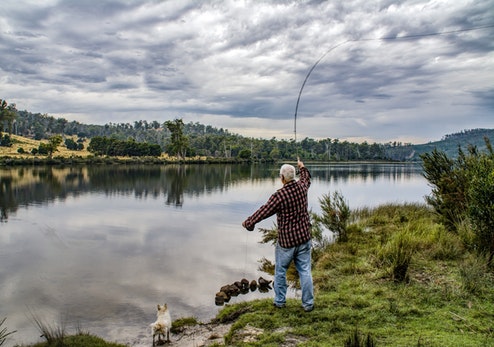If you have never have gone fly fishing before and want to learn the basics, then you are in the right place! This section is to educate you on the basics of fly fishing and a few other things you should know before you get out on the river. Some other topics include fly fishing techniques, equipment, etc.

The Basics
Fly fishing involves using an artificial fly to catch fish. You can fly fish in both saltwater and freshwater places. The main difference between fly fishing and other fishing is there is no weight on the fishing line. In lake fishing and ocean fishing, you have a weight to pull the hook down toward the bottom of the lake or ocean. When you are fly fishing, there is no weight so the line can be carried down the river. Another difference is you are trying to fool the fish into going after the artificial fly where as for other fishing you usually have bait on your hook to entice the fish.The fish that are most commonly caught when fly fishing are grayling, salmon, trout. You can catch other fish such as carp, bass, and pan fish, but those type of fish are more commonly associated with lake fishing. One important thing you should learn if you are fly fishing is the improved clinch knot – used to tie on your flies- because it is the one used most. Another knot that is important to learn is the arbor knot because that will be used to connect your fly fishing line to your reel.
Techniques
This section is to teach you some important tips and techniques you should learn before fly fishing.
Remove Barbs – Removing the barbs on your hooks will make it easier to hook the fish. It will also make it easier to remove the hook from a person if an accident occurs.
Polarized glasses – If you have ever gone fishing before, you have probably heard about buying a nice pair of polarized glasses. I will reiterate it again though because it is so important. Polarized glasses reduce the glare of the sun off the water which will allow you to see into the water and spot fish.
Examine Fly – Every time you catch a fish, check to see if your fly needs repair. Rotate the wings back in place if they are out of place and make sure the tackle is not damaged. Clean off your fly after you catch a fish.
Stealth – Fishing should be a relaxing experience. There is no need to rush down to the shore and make a lot of noise. It will scare the fish away. By moving slowly, the fish will stay in the area you are trying to fish more easily. Wearing clothes that blend into your environment can also help.
Watch your Drift – You should let the line drift between 6 and 8 feet. Any farther and you will end up with some line management problems. Make sure you do not cast to far to begin with and you should not run into problems.
Equipment
-Fly Real
-Fly Rod
-Waders
-Artificial Flies
-Fly Net
-Fly Line
-Wading Pole
-Wading Belt